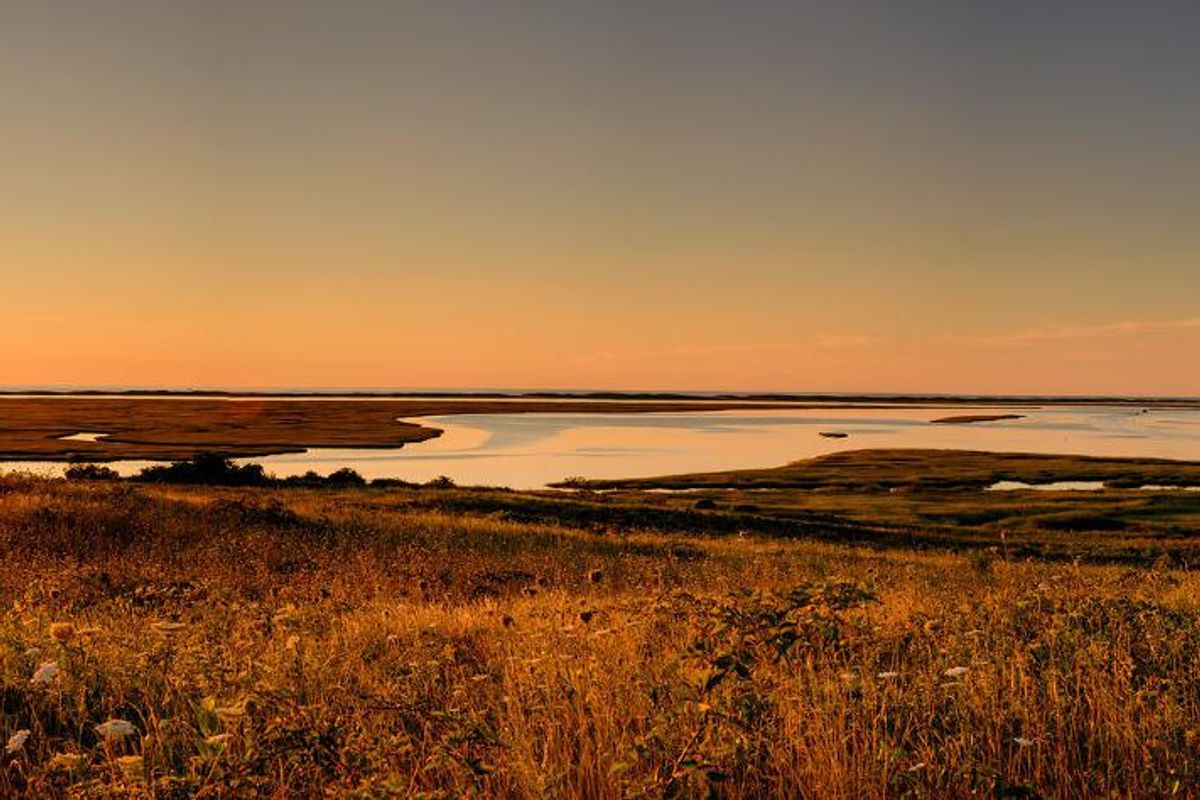
Imagine a marvel of nature that changes itself every six hours: new views, new sounds, new smells, four times a day.
Of course, that’s what the tides do at the shoreline. This is most beautifully done in salt marshes. That’s what captured me.
First, it was the smell—the mix of rotting beach grass and crab shells that, in another context, meant that a first grade classmate had just cut a fart. How could that methane smell be so evocative when driving by a salt marsh and so repulsive when it’s issued from the dorsal side of a kid in Miss Von Bargen’s class?
Chalk up another one to the mysteries of nature.
Two sprawling salt marshes factored early in my life: Nauset Marsh, a relatively pristine treasure within the protected confines of the Cape Cod National Seashore; and the Hackensack Meadowlands, the landfill-choked alleged final resting place of Jimmy Hoffa and current home of the futile New York Giants and Jets. But that’s another story, and the Giants and Jets are a different aroma altogether.
Long before Silent Spring, Rachel Carson had a best-selling book called The Sea Around Us. I found a battered paperback copy on my big brother’s bookshelf, and salt marshes suddenly made a lot more sense as the nursery for seafood, feeding ground for shorebirds, and so much more. As my horizons broadened, I found more and more spots with that royal, rancid smell: the tide flats of the Delaware River, where horseshoe crabs rule and Sylvia Earle, one of my saltwater heroes, fell in love with the sea. The blue-blooded horseshoes are also the source of a costly pharmaceutical that may be needed for COVID-19 vaccines.

Others include the Chesapeake Bay, where a century-long battle over seagrass, development, farm chemicals, fish and fishers is coming to some kind of conclusion; and California’s Elkhorn Slough, where sea otters loll among the kelp.
A lot of people have responded to salt marshes threats, but a much bigger, global threat looms. The marshes rely on the tenuous balance between land and sea. Should the ice covering Greenland and Antarctica melt away, our salt marshes are gone. There’s no guarantee that nature can rebuild them. A free-floating Jimmy Hoffa would be the least of our problems.
Our friends at Inside Climate News recently reported on three Superfund sites along an otherwise beautiful stretch of the Georgia coastline, where wood treatment chemicals and other carcinogens are stored.
One thing I’ve not seen reported is that President-elect Biden’s beloved state of Delaware is the lowest-lying of the 50 states. Worst-case sea level projections show much of Delaware disappearing.
As seas rise and salt marshes, mangrove swamps, and barrier islands lose their ability to protect the mainland worldwide, Miami Beach and Bangladesh could see the same impacts. The outgoing president’s stated goal of “drain(ing) the swamp” in Washington will instead see our actual swamps get swamped.
And we’ll really miss the smell of that fetid, wonderful swamp.
Peter Dykstra is our weekend editor and columnist and can be reached at pdykstra@ehn.org or @pdykstra.
His views do not necessarily represent those of Environmental Health News, The Daily Climate or publisher, Environmental Health Sciences.
Banner photo: Nauset Marsh, Cape Cod (Credit: Graeme Tozer/flickr)





